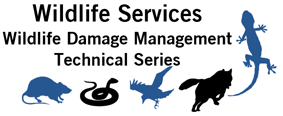U.S. Department of Agriculture: Animal and Plant Health Inspection Service
Date of this Version
1-2017
Document Type
Article
Citation
Barzen, J. and K. Ballinger. 2017. Sandhill and Whooping Cranes. Wildlife Damage Management Technical Series. USDA, APHIS, WS National Wildlife Research Center. Ft. Collins, Colorado. 16p.
Abstract
As sandhill crane populations continue to grow in the United States, so too does crop damage, property damage to homeowners, and the risk of crane collisions with aircraft. Whooping crane populations also continue to grow, but with a global population of about 500 individuals (as of 2017), damage is rare and problems often require different solutions due to the species’ endangered status. The behavioral characteristics and habitat needs of sandhill and whooping cranes set the stage for conflict between these birds and people. Recognizing behavioral differences between territorial and non-territorial cranes greatly improves the effectiveness of any management effort.
Human-Wildlife Conflicts
Damage Identification
Management Methods
Economics
Species Overview
Legal Status
Glossary & Key Words
Resources
Appendix
Included in
Behavior and Ethology Commons, Biodiversity Commons, Other Animal Sciences Commons, Other Ecology and Evolutionary Biology Commons, Population Biology Commons, Terrestrial and Aquatic Ecology Commons

